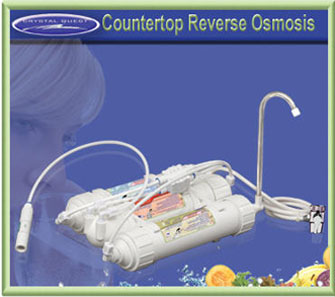How to Filter Radiation


Reverse Osmosis
The EPA recommends reverse osmosis water treatment for most kinds of radioactive particles. Iodine-131 emits a small amount of gamma radiation but much larger amounts of beta radiation, and so is considered a beta emitter:
Reverse osmosis has been identified by EPA as a "best available technology" (BAT) and Small System Compliance Technology (SSCT) for uranium, radium, gross alpha, and beta particles and photon emitters. It can remove up to 99 percent of these radionuclides, as well as many other contaminants (e.g., arsenic, nitrate, and microbial contaminants). Reverse osmosis units can be automated and compact making them appropriate for small systems.
via EPA, Radionuclides in Drinking Water
However, EPA designed its recommendations for the contaminants typically found in municipal water systems, so it doesn't specify Iodine-131 by name. The same document goes on to say, "Reverse osmosis does not remove gaseous contaminants such as carbon dioxide and radon."
Iodine-131 escapes from damaged nuclear plants as a gas, and this is why it disperses so quickly through the atmosphere. It is captured as a gas in atmospheric water, falls to the earth in rain and enters the water supply.
This is what happened in Boise, Idaho, where iodine-131 was found in rainwater samples last week and then in drinking water samples a few days later.
Reverse osmosis works by forcing water through material with very tiny pores - as tiny as .0001 microns - so that almost nothing except water emerges on the other side. Almost nothing.
"Dissolved gases and materials that readily turn into gases also can easily pass through most reverse osmosis membranes," according to the University of Nevada Cooperative Extension. For this reason, "many reverse osmosis units have an activated carbon unit to remove or reduce the concentration of most organic compounds."
Activated Carbon
That raises the next question: does activated carbon remove iodine-131? There is some evidence that it does. Scientists have used activated carbon to remove iodine-131 from the liquid fuel for nuclear solution reactors. And Carbon air filtration is used by employees of Perkin Elmer, a leading environmental monitoring and health safety firm, when they work with iodine-131 in closed quarters. At least one university has adopted Perkin Elmer's procedures.
Activated carbon works by absorbing contaminants, and fixing them, as water passes through it. It has a disadvantage, however: it eventually reaches a load capacity and ceases to absorb new contaminants.
Ion Exchange
The EPA also recommends ion exchange for removing radioactive compounds from drinking water. The process used in water softeners, ion exchange removes contaminants when water passes through resins that contain sodium ions. The sodium ions readily exchange with contaminants.
Ion exchange is particularly recommended for removing Cesium-137, which has been found in rain samples in the U.S., but not yet in drinking water here. Some resins have been specifically designed for capturing Cesium-137, and ion exchange was used to clean up legacy nuclear waste from an old reactor at the Department of Energy's Savannah River Site (pdf).
Triple Threat
The best solution may be the one used routinely to treat water at the Savannah River Site. The process combines activated carbon, reverse osmosis, and ion exchange. If one doesn't get the iodine-131, two others have a chance to capture the radiation through other means.
Radiation Filtration methods
Our reverse osmosis units include all three of these processes: carbon, reverse osmosis, and ion exchange. They are the most effective systems available to not only protect you from radioactive particles but also fluoride, heavy metals, pesticides and many other contaminants. We have reverse osmosis systems designed for under your sink as well as a countertop option:


